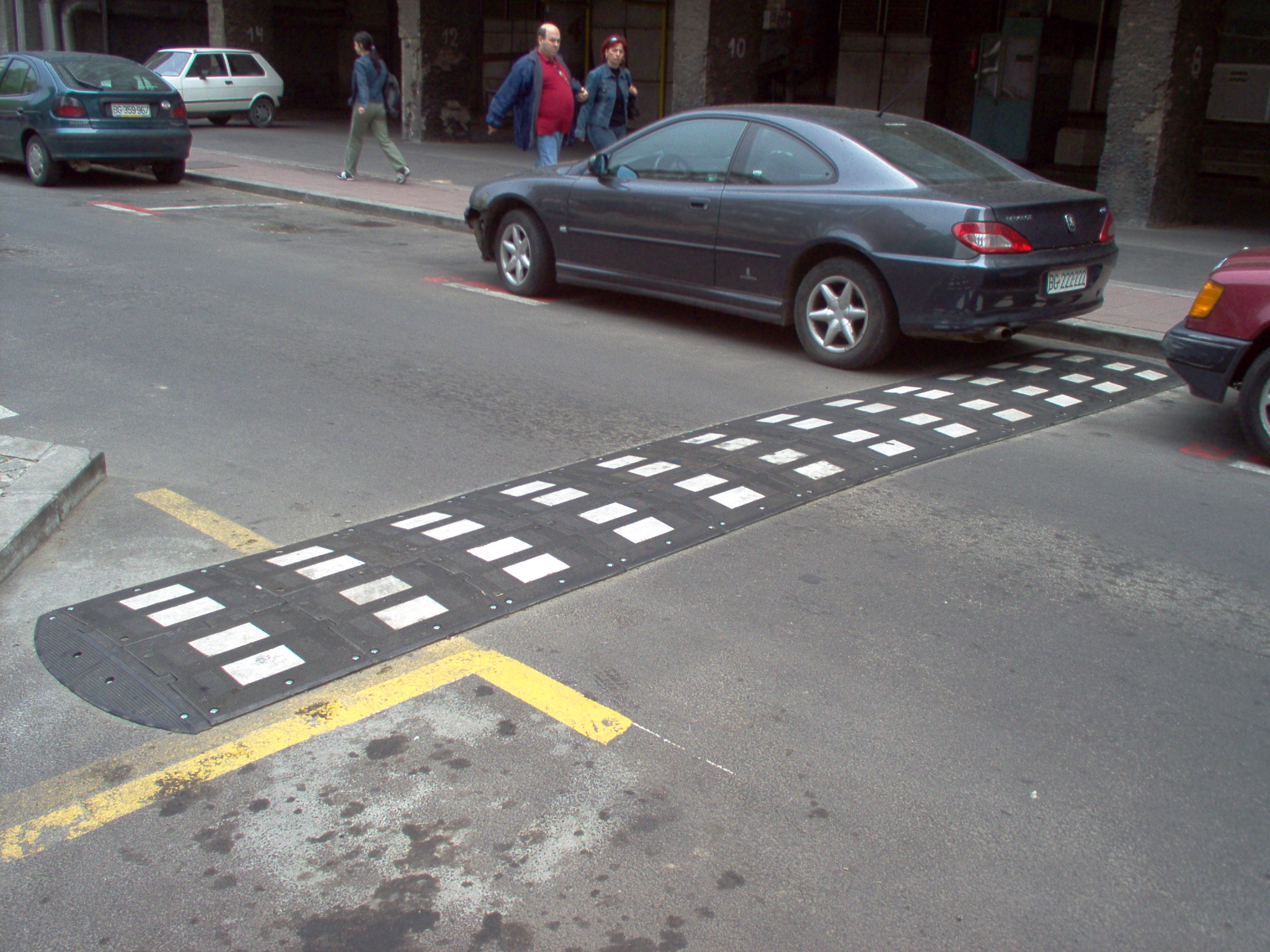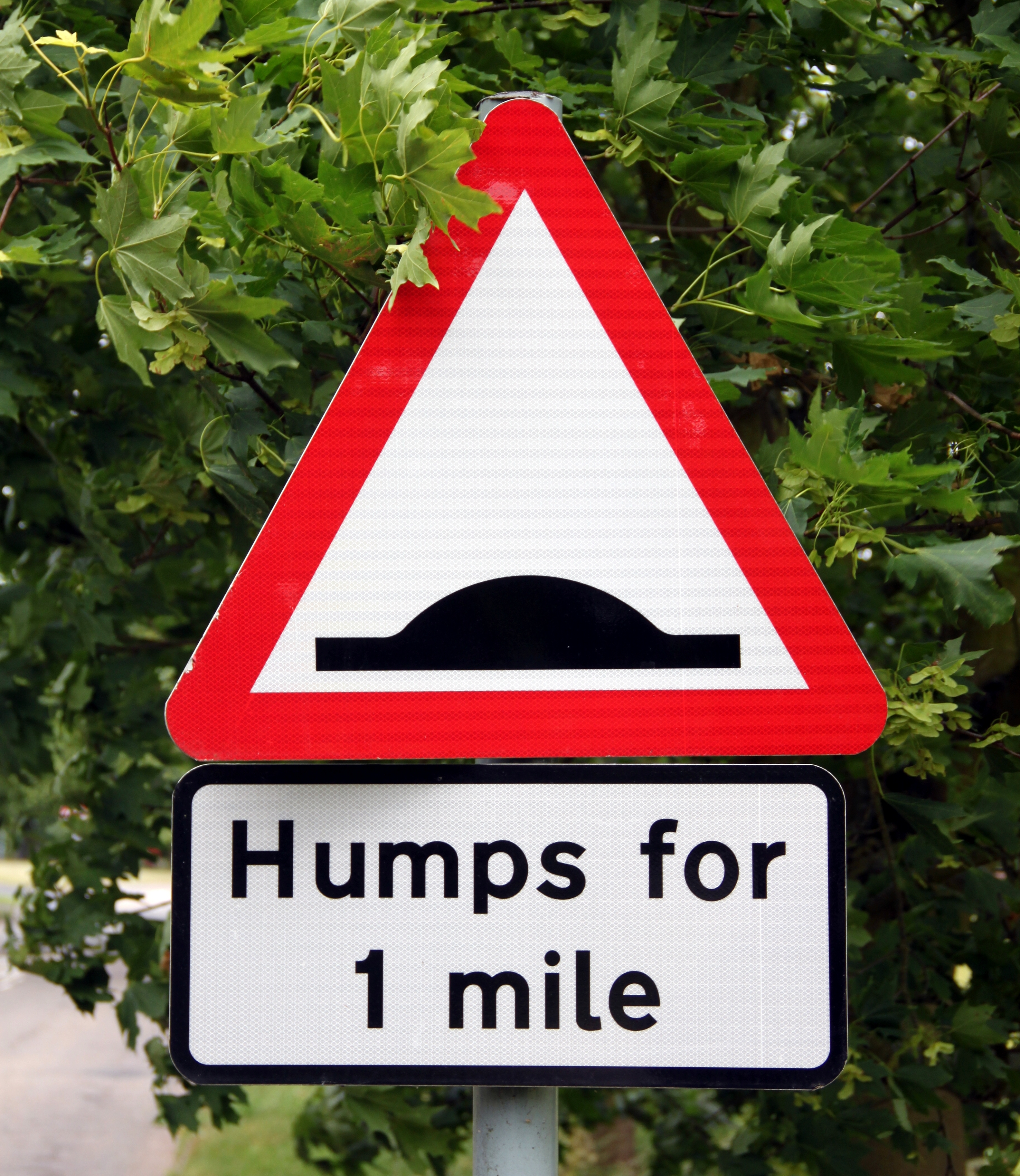Speed bumps
Enlarge text Shrink text- Amer. heritage dict.
- Random House.
- WWW page "A Study on speed humps," Center for Transportation Research and Education, Iowa State Univ.("Speed humps differ from speed bumps. Speed bumps are 3-4 inches high and 1-3 feet long and have typically been used in parking lots and on private roads ... The driver must slow down almost to a complete stop. Speed humps are 3-4 inches high and 12-22 feet long. They are found on residential roadways ... The driver slows to a speed of 15-20 mph.")
- WWW page City of Austin, Transportation Division, "Questions and answers about speed humps"("Speed 'humps' are different from speed 'bumps,' which are seen in may private parking lots. A speed bump is abrupt ... Speed bumps cause most vehicles to slow down to almost a stop ... Speed humps ... are designed so most vehicles can go over them at 20 mph")
Speed bumps (also called traffic thresholds, speed breakers or sleeping policemen) are a class of traffic calming devices that use vertical deflection to slow motor-vehicle traffic in order to improve safety conditions. Variations include the speed hump, speed cushion, and speed table. The use of vertical deflection devices is widespread around the world, and they are most commonly used to enforce a speed limit under 40 km/h (25 mph). Although speed bumps are effective in keeping vehicle speeds down, their use is sometimes controversial—as they can increase traffic noise, may damage vehicles if traversed at too great a speed (despite that being the point), and slow emergency vehicles. Poorly-designed speed bumps that stand too tall or with too-sharp an angle can be disruptive for drivers, and may be difficult to navigate for vehicles with low ground clearance, even at very low speeds. Many sports cars have this problem with such speed bumps. Speed bumps can also pose serious hazards to motorcyclists and bicyclists if they are not clearly visible, though in some cases a small cut across the bump allows those vehicles to traverse without impediment.
Read more on Wikipedia >
 Topic
Topic







